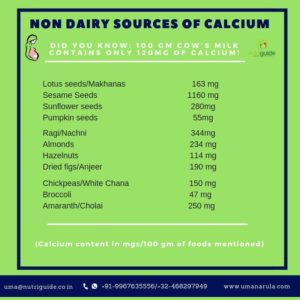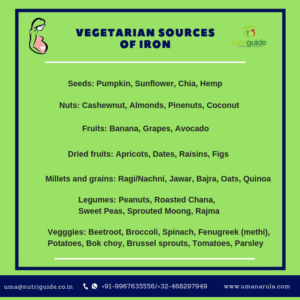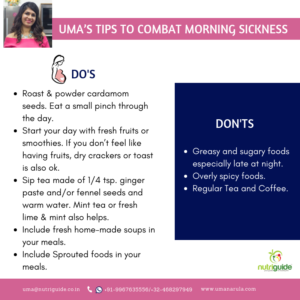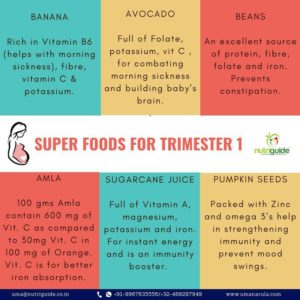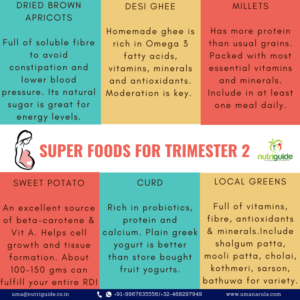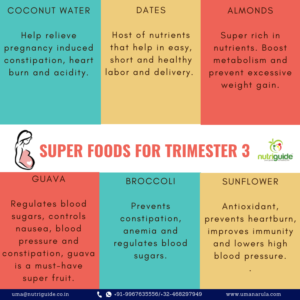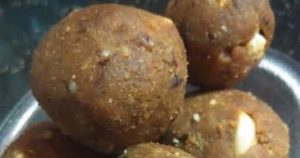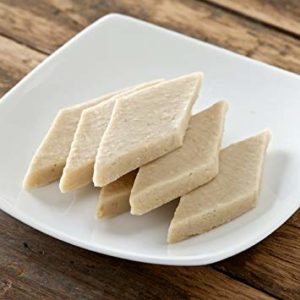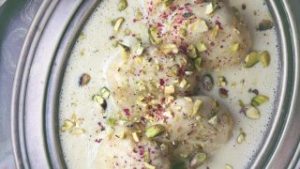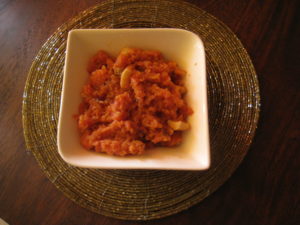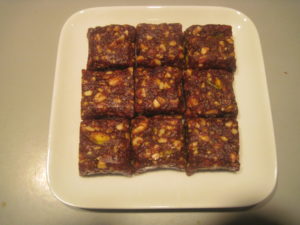
Yes! you read it right “Snacking is not bad for you”.Rather snacks are fillers in between big meals and if chosen wisely can help you improve your overall health and help lose weight too. But snacking can easily get out of control when we are eating for reasons other than hunger, like boredom or fatigue. A total no-no is late-night snacking after dinner.The big yes is picking the right snack.
The biggest consideration when picking a snack is its nutrient content. Snacks are great ways to make up for the much needed vitamins and minerals that most people are deficient in.But unprepared, we often end up making unwise choices willingly or unwillingly.Relax! Its not as much a chore as you normally think. Ensure you buy the right ingredients while you pick the weekly grocery and half the battle is won.Plan the weekly snack menu also while planning your main meals. This planning helps you long way in sticking to healthier snack options mostly, avoiding packaged foods.
Avoid the below mentioned store-bought/processed/sugar laden snacks for their home-made alternatives
Microwave Popcorn: Carcinogenic chemicals, GMOs and trans fat- this is all what goes in microwave popcorns.Your body will thank you for not picking same.
Eat This: Air Popped Pop corns, Pop your own corns. With dash of oil or butter, pinch of sea salt and your favourite seasonings. Your bowl of goodness all set in 5 min.
Flavoured yogurt: Often marketed as a healthy option, but the artificial flavours and sweetners make it far from healthy.
Eat This: Low fat greek yoghurt.Not a fan of plain yogurt? Try adding your favourite fruit to same. It makes great combo of good taste and sound health.
Packaged Namkeens/Savoury Snacks:No chai-time in an Indian household is complete without the various sevs,namkeens, bhakadwadis , packaged chivdas and bhujiyas. While these are great chat-pat items, they are not very filling and you definitely can’t eat huge servings!A lot of these items can be made at home too but most of us run short of time and cooking skills. Check out your neighbourhood and area FB pages if you can find ladies who make these savouries at home, that way you are surer of what’s going in.Though not absolutely healthy but still far better from preservative and artificial flavours laden packaged options in supermarkets.
Eat This: Roasted makhana, roasted dal mixtures/peas/edamame, murmura, theplas, poha or upma instead. Your chai-time will be better!
The famous street snacks:Again every Indian is particularly fond of street snacks like pav-bhaji, chaat, pakodas/bhajiyas, shawarma, alu tikki, vada pav etc. Do indulge in these treats once in a way and try sharing your portion with a friend or family. That way, you are enjoying the taste but limiting your intake as well.
Eat This: Bhel with chutney, Idli sambar,Veggie Sandwich. Baking the pattice in ragda pattice makes it a healthy guilt free treat rather than market bought fried version.Get these items prepared at home with a few tweaks in the recipe to make it more healthy.
Bread:It is the most common go to option for snack in most households. Not a good choice if prepared from refined flour. Moreover chemicals such as dough conditioners,acidity regulators added to improve its texture and increase its shelf life make it an unhealthy choice.
Eat This: Read the label before you buy your bread.Organic bread free from processed flour and other chemicals. Millet breads are a great option too.
Biscuits,Cakes and Muffins:Most children consume Oreo,Bourbon or Little hearts almost every day! By the time they are teens, its such a natural part of their diet that a biscuit packet is bought whenever one is hungry and on the go.Sadly, these convenient packets are full of refined flour, sugar and a thousand flavourings and preservatives!Ready-made slice cakes are another option generally bought for evening snacks.But it is equally full of artificial flavourings and added sugars.
Eat This:Try baking at home. No time for baking?Think of biscuits and cakes as once in a while treat and not a daily routine. Try combining some nuts of your choice with dates and preparing yummy energy bar.More fulfilling, tastier and healthier for sure.70% Cacao Dark Chocolate is abetter option too.
Store bought Smoothies:Not all smoothies are created equal. Home-made smoothies can be power-packed with nutrients, but grab-and-go smoothie, are often jam-packed with added sugar and flavours. Moreover it won’t keep you feeling full like a good snack should!
Eat This:Make up your own delicious combinations.Pick fruits and veggies of your choice. Blend them well, add some seeds or nuts or yoghurt. Your glass of goodness is ready.
Veggie Sticks:Heavily advertised, these sticks are like wolves in sheep’s clothing. While they may be slightly lower in fat than chips, these snacks don’t offer protein or fibre they market for and are essentially devoid of nutrients.
Eat this:Munch on actual cucumber, carrot, radish sticks instead along with hummus or mint yoghurt dip.
Crackers,Chips, Pretzels and Fries:Potato is not bad. Its the way its cooked and packaged that makes it a bad choice.Potato chips bags are not only loaded with artificial flavours and chemical preservatives but are also rich in trans fats. A cracker may seem a healthier choice than chips, but one serving probably won’t fill you up since these crackers are low in water, volume, protein, and fibre. So you’ll probably double the serving—which means your snack now contains double the calories, fats and sodium.Pretzels may be low in fat than chips but are still overloaded with salt and processed flour.
Eat This: Olives,Kimchi,Home baked potato or sweet potato chips,Traditional Baked Potato, Aloo chaat,Home baked cheese crackers.
Ready-to-eat meats:If your idea of a perfect snack is some sausages or salami wrapped in a roll,be cautious. These convenient slices are full of nitrates, sodium, additives, and preservatives.
Eat This: Cooking fresh chicken meat for rolls and sandwiches.
Dried Fruit:While a snack bag full of dried fruit may seem like sensible choice, keep the serving size in perspective. Would you eat 10 apples in one sitting? Or 8 oranges? Because dried fruit is pretty much just that. Fruit that has been shrunken down and extracted of its moisture—but the natural sugars remain. Avoid the sugar coated variety.
Eat This:A fist full of plain and natural dried fruit.
Protein Bars:While there are many kinds of protein bars, in most cases the nutrition info on the back of the package might surprise you. Most protein bars are highly processed, even featuring artificial ingredients and fillers. If your protein bar has first ingredient as sugar, it’s more like a candy bar with added protein than health food.
Eat This: Organic Protein Bars with nuts or whey protein as the first/main ingredient.
Salted or flavoured nuts:If you pick nuts with added salts or flavours, you’re tipping the scales to the unhealthy end. If you look at a nut section you’ll see ‘roasted,’ ‘ranch,’ and ‘barbecued’.
Eat this:Nuts are a great snack option, just save on the salt by choosing the unsalted version.Else roast at home,this way you control the salt amount that goes in. Try adding some herbs like dried mint leaves,oregano,rosemary for natural flavours.
Granola:Granola makes you feel good, but this snack is usually sweetened, so you’re getting extra sugar in the mix, it’s more decadent than having plain cereal.Often rich in processed carbs and not a perfect blend of all nutrients.
Eat this: Steel cut oats, with chopped dates or raisins for natural sweetness or be mindful of your portions if choosing granola.
Flavoured Soy Milk/Flavoured Water/Sweetened Drinks
If you are switching to soy instead of dairy – soy is great as its low in cholesterol and high in potassium and protein. But if, instead of plain soy milk, you choose the chocolate or vanilla version, you’re taking a big step back. They add sugar and unnecessary artificial flavours.
Flavoured water is not behind either as its not only water and flavours.Read labels to understand what you’re consuming as it often comes with added sweeteners.
Fruit drinks if not made from 100% fruit juice are just as bad as soda.Most popular brands contain artificial colours and high fructose corn syrup.
Eat This:Save the flavoured soy milks for the occasional dessert and choose unsweetened or plain varieties for your everyday drinking instead. Flavour your water naturally with your favourite fruits and herbs. Pick the 100% fruit juice or try some smoothie instead.
Trail Mixes:Nuts and dried fruit mixed together? Sounds pretty healthy. And if you stick to a responsible portion size of a brand that uses plain, unsweetened dried fruits and unsalted nuts, it just may be. The problem is that many mixes include add-in’s like chocolate chips and sprinklers which introduce excess salt and sugars.
Eat This:Prepare your own Trail Mix.You just need to roats and mix your favourite nuts and seeds with dried fruits or dark chocolate. Your health snack is ready and can be stored for upto a month!
The fat free /Diet/Low fat Snacks
Don’t jump on to that packet of biscuits/chips or namkeen reading these claims. Make sure to read the whole ingredient list more carefully instead. As these claims are often marketing deceptions.
Eat This: Roasted Chana,Poha Chiwda, Roasted Murmura with peanuts.
Ready-to-heat Instant Oatmeal/Sugary Cereals:It’s a whole grain, a healthy grab-and-go breakfast choice, and easily topped with other healthful sides like berries, flax and nuts. So what could possibly be bad about oatmeal? Flavoured packets have more sugar and sodium than regular rolled or steel cut oats.
Eat This: Dress up regular oatmeal with fresh fruit or dates puree.
Hope this helps you eat healthy snacks that are tasty too!
Stay Tuned! Our next write up on how to read food labels -Coming soon.
Follow us on fb https://www.facebook.com/UmaNarulaNutriguide/ for regular tips on health,wellness,eat right and much more.

